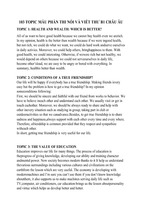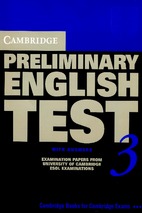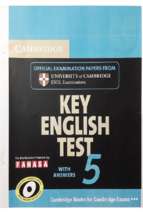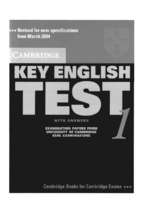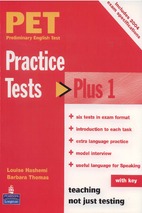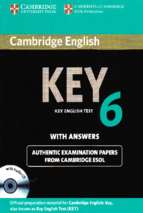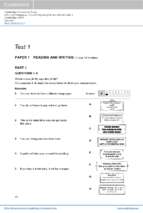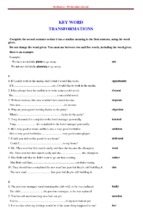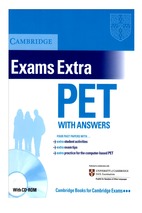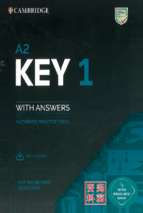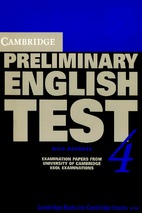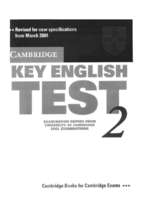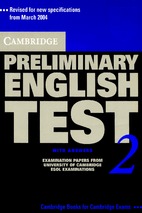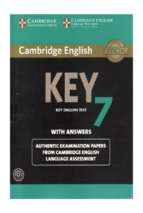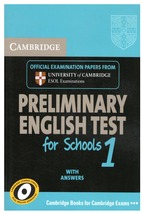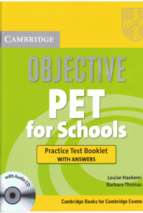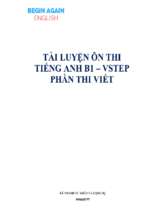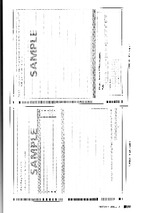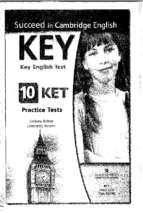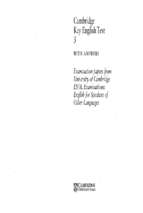VIETNAM NATIONAL UNIVERSITY, HANOI
UNIVERSITY OF LANGUAGES AND INTERNATIONAL STUDIES
FACULTY OF POST-GRADUATE STUDIES
LÊ THỊ KIM NHUNG
A STUDY ON THE USE OF MOBILE APPLICATIONS TO IMPROVE
VOCABULARY LEARNING AND TEACHING IN AN ENGLISH
CENTRE IN HANOI
(Nghiên cứu về việc sử dụng các ứng dụng trên điện thoại thông minh để
cải thiện việc dạy và học từ vựng tại một trung tâm tiếng Anh tại Hà Nội)
M.A. APPLIED PROGRAMME THESIS
Field: English Teaching Methodology
Code: 8140231.01
HANOI – 2020
VIETNAM NATIONAL UNIVERSITY, HANOI
UNIVERSITY OF LANGUAGES AND INTERNATIONAL STUDIES
FACULTY OF POST-GRADUATE STUDIES
LÊ THỊ KIM NHUNG
A STUDY ON THE USE OF MOBILE APPLICATIONS TO IMPROVE
VOCABULARY LEARNING AND TEACHING IN AN ENGLISH
CENTRE IN HANOI
(Nghiên cứu về việc sử dụng các ứng dụng trên điện thoại thông minh để
cải thiện việc dạy và học từ vựng tại một trung tâm tiếng Anh tại Hà Nội)
M.A. APPLIED PROGRAMME THESIS
Field: English Teaching Methodology
Code: 8140231.01
Supervisor: Dr. Nguyễn Thị Ngọc Quỳnh
HANOI – 2020
DECLARATION
By submitting this thesis, I declare that the entire work is my own
original work, which has not been submitted to any other university or
institution. Other sources of information used in this paper have been clearly
identified and acknowledged.
Hanoi, October 2020
Lê Thị Kim Nhung
Xác nhận của
Xác nhận của
Chủ tịch Hội đồng
Cán bộ hướng dẫn
Huỳnh Anh Tuấn
Nguyễn Thị Ngọc Quỳnh
i
ACKNOWLEDGMENTS
First of all, I would like to express my gratitude to my thesis advisor,
Dr. Nguyễn Thị Ngọc Quỳnh for her particularly valuable guidance,
contributions and support throughout the study.
I would also like to express my genuine thanks to all of the members in
Post-graduate Department of University of Languages and International
Studies (Hanoi) for designing such a great syllabus of the Master program.
Finally, I am also grateful to my family members who have always been
supportive, encouraging, and above all inspiring all through my study time.
Hanoi, October 2020
Lê Thị Kim Nhung
ii
ABSTRACT
Language teaching and learning has undergone significant changes as a
result of rapid development of technology. This research is a mixed methods
research with the participation of ten students from different high schools in
Hanoi. The purpose of this study was to figure out whether the chosen mobile
application named Quizlet effectively facilitated learners in their vocabulary
recall. An online Quizlet class was created and students were expected to use
this mobile application to self-study SAT test essential vocabulary in ten
weeks. The instruments included a pre-test at the first week, a post-test at the
tenth week, and a face-to-face interview. Findings of the study show that the
use of mobile application Quizlet is meaningful to learners‟ vocabulary recall.
In addition, the attitude of the students toward the application was rather
favourable although there were some challenges during the learning process.
Keywords: mobile-assisted language learning, mobile application, vocabulary recall
iii
LIST OF ABBREVIATIONS
CALL : computer-assisted language learning
MALL : mobile-assisted language learning
SAT
: Scholastic Aptitude Test
SPSS : Statistical Package for the Social Sciences
iv
LIST OF TABLES AND FIGURES
Table 1: Challenges that students may encounter when using mobile
application in vocabulary learning and teaching............................................. 37
Figure 1: The convergent design diagram....................................................... 24
Figure 2: Paired Samples Statistics ................................................................. 32
Figure 3: Paired Samples Test......................................................................... 32
Figure 4: The effect of mobile applications on facilitating students‟
vocabulary recall ............................................................................................. 35
v
TABLE OF CONTENTS
DECLARATION .............................................................................................. i
ABSTRACT .................................................................................................... iii
LIST OF ABBREVIATIONS ....................................................................... iv
LIST OF TABLES AND FIGURES .............................................................. v
CHAPTER 1: INTRODUCTION ................................................................. 1
1. Rationale for the study .................................................................................. 1
2. Aims of the study .......................................................................................... 2
3. Research questions ........................................................................................ 3
4. Scope of the study ......................................................................................... 3
5. Significance of the study ............................................................................... 3
6. The structure of the thesis ............................................................................. 4
CHAPTER
2:
LITERATURE
REVIEW
AND
THEORETICAL
BACKGROUND ............................................................................................. 6
2.1. Overview of mobile assisted language learning (MALL) ......................... 6
2.1.1. Definition of MALL ................................................................................ 6
2.1.2. Mobile devices and mobile applications that assist English vocabulary
learning .............................................................................................................. 7
2.1.3. Benefits of MALL ................................................................................... 9
2.2. Vocabulary teaching and learning............................................................ 10
2.2.1. Definition of vocabulary ....................................................................... 10
2.2.2. Vocabulary teaching.............................................................................. 13
2.2.3. Vocabulary learning .............................................................................. 13
2.3. The use of mobile application called Quizlet in English learning and teaching15
2.3.1. Brief introduction of the mobile application Quizlet ............................ 15
2.3.2. The use of Quizlet in English learning and teaching ............................ 18
2.4. Summary .................................................................................................. 18
vi
CHAPTER 3: METHODOLOGY............................................................... 20
3.1. Restatement of the purpose of the study and the research questions ....... 20
3.2. Research design ........................................................................................ 20
3.3. The setting and participants of the study ................................................. 25
3.3.1. The setting ............................................................................................. 25
3.3.2. Participants ............................................................................................ 25
3.4. Data collection tool .................................................................................. 27
3.4.1. Pre-test and post-test ............................................................................. 28
3.4.2. Face-to-face interview........................................................................... 28
3.5. Data collection procedures ....................................................................... 29
3.6. Data analysis methods .............................................................................. 30
3.7. Chapter summary ..................................................................................... 31
CHAPTER 4: FINDINGS AND DISCUSSIONS ....................................... 32
4.1. Pre-test and Post-test results .................................................................... 32
4.2. Students‟ attitudes towards the use of mobile applications in vocabulary
learning ............................................................................................................ 33
4.3. Challenges that students may face when using mobile applications in
learning and teaching ...................................................................................... 37
4.4. Chapter summary ..................................................................................... 39
CHAPTER 5: CONCLUSION ..................................................................... 41
5.1. Recapitulation .......................................................................................... 41
5.2. Implications .............................................................................................. 41
5.3. Conclusion................................................................................................ 42
5.4. Limitation of the study ............................................................................. 43
5.5. Suggestions for further study ................................................................... 44
REFERENCES .............................................................................................. 45
APPENDICES .................................................................................................. I
APPENDIX 1: PRE-TEST AND POST-TEST ................................................. I
APPENDIX 2: TEST SCORES ....................................................................... V
vii
CHAPTER 1: INTRODUCTION
1. Rationale for the study
Technology has changed the way that English is taught and learned in
the classroom. Nowadays, several terms such as „computer-assisted language
learning‟ (CALL), „mobile-assisted language learning‟ (MALL) and „blended
learning‟ are becoming increasingly familiar to teachers. In recent years, the
application of technology in educational purposes has been of great concern
for researchers in the field. In many developed countries in the world, it is
unnecessary for teachers to struggle with a CD player or a blackboard and a
piece of chalk anymore. They have new technologies such as overhead
projectors, interactive whiteboards, computer labs equipped with wireless
internet, so that they could make use of PowerPoint to present grammar, play
podcasts or videos to give instruction on listening skills, or even provide
students with access to a wide range of web-based tools (online course in
Canvas or Moodle) that allow them to study at home and publish their work
and engage with peer review and self-assessment. In many classrooms,
students are equipped with tablets when they enter the class for learning
purposes. It is no doubt that technology plays an important role not only in
boosting students‟ learning autonomy but also in facilitating teachers in their
teaching.
When teaching English vocabulary to a group of high school students
planning to take the SAT test, the researcher realized that (1) students find
paperwork uninteresting; therefore, their learning autonomy and engagement
in classroom activities seem rather low, which hinders their improvement of
lexical range, (2) students are not willing to study vocabulary both inside and
1
outside the classroom in traditional ways including using paper-based
flashcards and keeping vocabulary notebooks. Since vocabulary competence
plays a key role in the success of a SAT test taker, it is crucial for the
researcher to find out and employ appropriate educational technological
tool(s) that would help address these above problems. It is expected that the
selected tool would make great contribution to creating a lively atmosphere in
class and improving students‟ learning autonomy and engagement. The
researcher then made the decision on choosing a mobile application called
Quizlet, which is an online learning community providing engaging,
customizable activities and numerous learning modes to help students practice
and master whatever they are learning to apply to this SAT preparation class.
Furthermore, other two applications that facilitate teachers in obtaining recent
multiple-choice test results are also employed, namely Kahoot! and Plickers.
Mentioned above are the primary reasons why the researcher would like
to carry out the action research titled “A study on the use of mobile
applications to improve vocabulary learning and teaching in an English centre
in Hanoi.” Beside all of those justification, personal passionate interest in the
application of pedagogical technologies to teaching as well as mobile-assisted
language learning is also one of the inspirational factors urging the researcher
to conduct the study.
2. Aims of the study
This research aims at:
(1)
reporting in details the process and result of the use of the mobile
application called Quizlet in an English classroom;
(2)
verifying if the application Quizlet effectively facilitates English
vocabulary learning and teaching activities; and
2
(3)
determining challenges and difficulties that teachers and students
may face when using mobile applications in teaching and learning.
3. Research questions
The study is conducted to find answers to a primary research question,
which is „Does the mobile application named Quizlet effectively facilitate
students‟ recall to essential words of the SAT test?‟ In order to address this
primary research question, the research aims at answering the following
secondary research questions:
(1)
To what extent does selected mobile application in English
vocabulary teaching improve students‟ English vocabulary recall test results?
(2)
What are the students‟ attitudes towards the mobile application?
(3)
What challenges and difficulties do students and teachers face
when using the mobile application?
4. Scope of the study
The study focuses on the application of the mobile application named
Quizlet to teaching and learning vocabulary in a class of ten students
(intermediate level) from various high schools in Hanoi. These students aimed
at getting high mark on the SAT tests in order to study abroad. In terms of
vocabulary, all lexical items were obtained from the Master Word List of the
book Barron's SAT, 29th Edition. Students were expected to recall the
essential words so that they were able to score the highest marks in their real
SAT test.
It is expected that the result of this study could be applied to further
studies which closely relate to the application of mobile technology in second
language and foreign language learning and instruction.
5. Significance of the study
The findings of this study may prove useful to the following:
3
Teachers/Instructors: This paper might raise their awareness of
applying an online technological tool to their teaching in order to
make it better and better. Also, trying to work with up-to-date
technologies would enhance professional development.
Students: This study might be meaningful to students to have a
clearer view and experience of the teacher‟s performance, which
would enhance students‟ participation rate during the lesson. In
addition, learners‟ learning autonomy of vocabulary would be
expected to increase.
Researchers in the field: This paper may serve as an inspiration in
employing a technological tool (mobile applications) in teaching and
undertaking more relevant research papers.
6. The structure of the thesis
This study is divided into five main chapters as follows:
Chapter 1 – Introduction deals with several general elements of the thesis,
which consists of the rationale, aims, research questions, scope, significance
and design of the study.
Chapter 2 – Literature review and theoretical background – gives a
critical review of the previous studies relating mobile assisted language
learning and the application of mobile applications to teaching and learning
English. Furthermore, the results of several studies on the use of mobile
application called Quizlet in English learning and teaching vocabulary are
briefly summarized.
Chapter 3 – Methodology – provides the information by which the
research was conducted and how the data was collected.
Chapter 4 – Data analysis and finding – describes how the data was
analyzed as well as the findings drawn from the data analysis. This chapter
4
reveals the results and discussion of the study, in which a primary research
question and three secondary ones are discussed and addressed.
Chapter 5 – Conclusion – summarizes the whole paper as well as
presents several limitations of the study. Moreover, implications and
suggestions for further studies are included.
5
CHAPTER 2: LITERATURE REVIEW AND THEORETICAL
BACKGROUND
The rapid development and expansion of high technologies, especially
mobile technology have changed the ways that instruction of foreign language
is delivered to learners. With the continuous improvements of portable and
mobile devices, people have made attempts to take advantage of mobile
devices in language learning, which led to the emergence of a new concept:
“mobile assisted language learning (MALL). MALL has been considered to
create a considerable impact on language instruction in terms of principles,
techniques, strategies, teacher and learner roles, material use and evaluation
process. This chapter covers the literature review of mobile assisted language
learning, vocabulary teaching and learning, and the use of the mobile
application called Quizlet in facilitating teaching and learning English.
2.1. Overview of mobile assisted language learning (MALL)
2.1.1. Definition of MALL
In recent years, mobile assisted language learning (MALL) has been of
great interest for researchers. MALL is considered as one of the possible
solutions to CALL (computer-assisted language learning) problems, including
the complication of the setup of desktop computer and the learners‟
negligence to what are presented on the desktop screen. Although, in general,
MALL has also been treated as a branch of CALL, Kukulska-Hulme and
Shield (2008) claimed that MALL was different from CALL „in its use of
personal, portable devices that enable new ways of learning, emphasizing
continuity or spontaneity of access and interaction across different contexts of
use.‟ (p. 273).
MALL focuses on how mobile technology can be applied to language
learning. According to Yang (2013), mobile-assisted language learning
6
(MALL) was „a burgeoning subdivision of computer assisted language
learning in general. As mobile technology has evolved, so have their
advanced applications developed for language education.‟ (p. 19).
Baleghizadeh and Oladrostam (2010) quoted the definition of MALL by
Trifanova, Ronchetti and Gamper (2004) as a sub-area of technology for
language learning (TeLL) including the use of „any device that is small,
autonomous and unobtrusive enough to accompany us at every moment‟ for
language learning and teaching purposes. In other words, MALL is defined as
the category of technology enhanced language learning that takes place with
the mobility and the portability of learning devices, as well as the mobility of
their users.
In short, MALL could be simply understood as a subset that might
overcome the drawbacks of CALL. In a MALL environment, learners are
assisted by portable devices such as smartphones or tablets in their learning.
Thanks to the useful mobile equipment, it is unnecessary for learners to sit in
front of paper-based books or desktop screens for a long time. They are now
able to learn anytime and anywhere with the support of mobile technology.
2.1.2. Mobile devices and mobile applications that assist English vocabulary
learning
Mobile devices which can be used for MALL include cell phones,
smartphones, personal digital assistants (PDAs), tablets, etc. They play an
important role in the acquisition of all the language skills with the support of
MALL. Recently, smartphone use in language learning caused the emergence
of Mobile Assisted Language Learning. According to Bahrani (2011),
„current use of mobile devices in language learning ranges from vocabulary or
grammar learning to story reading and pronunciation practices‟ (p. 245).
Nowadays, there is a wide range of mobile devices that can be employed in
7
language learning and teaching, but the role played by mobile devices are
variable depending on the type of the device used. For instance, in terms of
smartphones, it was stated by Chinnery (2006) that learners could practice
communicative language, expose themselves to authentic e-learning materials
and complete tasks online thanks to various features and functions that a
smartphone offers. In terms of tablets, the results of a comparative study
carried out by Lan, Sung, and Chang (2007) revealed that the application of
tablet personal computers to assist peer collaboration exceeded the
traditional class setting, at which students find it not easy to work with
their peers. In other words, EFL learners‟ anxiety and shyness when it
comes to peer collaboration in class could be lessened thanks to the
application of mobile devices. Moreover, their self-esteem and motivation
are boosted as Yang (2013) stated in her research paper.
Regarding mobile devices and applications that could help learners
improve their lexical range, several studies have been conducted by various
researchers. In the study on the application of PDAs to support undergraduate
learners of English in vocabulary self-study, Song and Fox (2008) verified the
effectiveness of the mobile device in helping highly motivated learners to
improve communication skills regarding word definitions with their peers and
lecturers outside the classroom. In the survey conducted by Deng and Shao in
2011, they investigated students' attitude towards self-directed English
vocabulary learning through an electronic dictionary application in daily
context. The results showed that learners were willing to study via mobile
applications in their everyday life. Basoglu and Akdemir (2010) conducted an
experimental research to make comparison between learning English
vocabulary via mobile phone applications and learning these lexical items
using paper-based flashcards. The results indicated that the experimental
8
group, whose members used smart phone applications to learn, achieved
significantly better in the multiple-choice post-test.
2.1.3. Benefits of MALL
With the use of mobile devices, significant opportunities have been
obtained in terms of material use and time allocated to language education.
MALL managed to eliminate the drawbacks of traditional vocabulary
instruction thanks to the facilities and functions brought by mobile devices.
In terms of benefits of MALL, lots of studies have reported that the
application of mobile technologies may have a positive contribution to foreign
language learning. Attewell (2005, p. 13) suggested MALL could bring
potential benefits in the following areas. Firstly, mobile learning facilitated
learners‟ ability to enhance not only their language skills but also other
essential skills such as collaborative skills and technological skills. Secondly,
mobile learning gave a hand to students to overcome the shyness or hesitancy
in raising their voice in class as they had the opportunity to participate in
various kinds of novel activities, which were less stressful in comparison with
those of traditional class. Finally, thanks to the help of mobile learning, the
duration of students‟ concentration was rather longer compared with normal
sessions „when it is normally difficult to focus them for 15 minutes‟ (p. 13).
Mobile
technologies
have shown
enormous
potential
for
the
development of learners‟ autonomy, creativity, motivation, and cooperative
skills. In the study by Kim and Kwon in 2012, they also summarized the
benefits of MALL. First of all, they stated that thanks to MALL, students had
easy and prompt access not only to a greater amount of language learning
materials but also to other people regardless of time and place. Furthermore,
the nature of digital technology „facilitates students‟ participation in both
collaborative and individualized language learning activities synchronously
9
and / or asynchronously allowing rapid development of speaking, listening,
reading, and writing skills‟ (p. 35). Last but not least, it was believed that
MALL provided various resources and tools for language learning that
encouraged learners to be more motivated, autonomous and socially
interactive.
Wang (2012) stated in the study conducted to investigate the use of
electronic dictionaries in reading electronic text that electronic dictionary
applications were particularly helpful in broadening intermediate and
advanced learners‟ lexical range, in which many items were essential to
improve their reading and writing skills. In the research on the effectiveness
of vocabulary learning via mobile phone, Lu (2008) concluded that mobile
groups acquired more new words than paper-groups students. The more
frequently they accessed SMS lessons, the more lexical items they gained and
remembered. In addition, Lu (2008) stated that students found it easier to
learn and memorize new lexical items in SMS (short message service) lessons,
which were considered convenient and interesting. As mobile learning
provided students a flexible learning environment where they were able to
learn anytime they wanted, students were impressed by the convenience and
effective time management in learning vocabulary through mobile phones.
2.2. Vocabulary teaching and learning
2.2.1. Definition of vocabulary
Although it is considered as a sub-skill in language learning, vocabulary
still plays a fundamental role in mastering a second / foreign language.
According to Richards (2003), vocabulary is „a set of lexemes which includes
single words, compound words and idioms‟ (p. 580), which is different from
word – „the smallest of the linguistic units which can occur on its own in
speech or writing‟ (p. 588). Obviously, vocabulary does not mean just a single
10
word such as „mom‟ or „dad‟. There are two types of vocabulary: receptive
vocabulary, which refers to the words we understand through reading and
listening; and productive vocabulary – the words we use to communicate
through writing and speaking (Lehr, Osborn, & Hiebert, 2004, p. 5). The
Oxford Advanced Learner‟s Dictionary (2010) provided a list of three
definitions in total for the word „vocabulary‟, which were (1) all the words
that a person knows or uses, (2) all the words in a particular language, (3) the
words that people use when they are talking about a particular subject (p.
1722). According to these definitions, it can be concluded that there are the
subject‟s vocabulary, the language‟s vocabulary and the person‟s vocabulary.
In short, vocabulary could be simply understood as all the words and phrases
used in a particular language or subject. Without these lexical elements, it is
impossible for a foreign language learner to convey his ideas or expressions
about something using the target language.
When it comes to vocabulary competence, there is a number of aspects
that learners should pay close attention to beside the spoken and written form
and the most common meaning of a lexical item. Ur (2015) proposes a list of
vocabulary knowledge aspects which need to be learnt as the following:
Form
Form consists of spoken and written, or in other words, pronunciation
and spelling respectively. Mastering these two fundamental aspects would be
particularly helpful to students, especially to their two productive skills
(speaking and writing).
Meaning: denotation
The denotational meaning of a lexical item can be normally found in
dictionaries as the very first meaning. Sometimes, the meaning of the original
word could be used to infer to „metaphorical extensions‟ based on the similar
features.
11
- Xem thêm -


